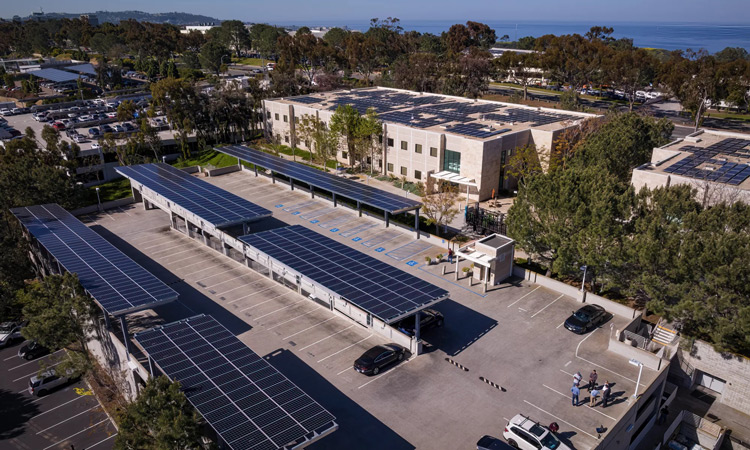Many in the county are facing barriers to adopting solar energy, but Sanford Burnham Prebys is leading the charge with a $2.5 million investment in solar power.
San Diego is a mecca for rooftop solar, with some of the highest installation rates in the nation. The county boasts the most rooftop solar in California under the state’s net-energy metering program. The region currently has 1,739 megawatts of such capacity, compared to just 1,096 megawatts in Los Angeles County.
And yet, many apartment buildings, warehouses and parking lots across the sun-soaked region lack photo-voltaic panels, and government programs that encourage solar in the city appear to be facing significant headwinds, most notably with the recent overhaul of how homeowners are compensated for rooftop installations.
Despite these limitations, Sanford Burnham Prebys has taken major steps toward converting to solar energy, making a significant investment in new solar energy infrastructure. Shiny, black solar panels blanket the campus, including the two-story parking structure, complete with electric vehicle charging stations.
These improvements are the latest in a series of sustainability projects spearheaded by Sanford Burnham Prebys over the last two decades.
However, sustainability does not come cheap. In total, the new solar energy infrastructure, which included 1,690 solar panels, 50 car charging stations and batteries to store the generated electricity, cost the Institute about $2.5 million.
Though steep, the cost has been an “amazing investment,” says John Reed, director of facilities at the Institute. “It’s a very quick payback.”
There are a small handful of other examples of solar-covered parking lots across San Diego, including at universities, hospitals and the international airport downtown. But it typically only pencils out if the business uses a lot of power on site. This leaves huge swaths of concrete bare where, some argue, there should be solar panels.
“It doesn’t disturb anything to put more solar on roofs and carports,” says Raphael Declercq, CEO of Powerflex, the company that constructed the Institute’s new solar infrastructure. “We just have to explain the value, and hopefully regulation will follow.”
For Sanford Burnham Prebys, the cost of solar is both a way to reduce energy costs at the Institute and an investment in sustainability. The upgrades could reduce yearly carbon emissions by as much as 696 metric tons. According to the EPA’s Greenhouse Gas Equivalencies Calculator, this is as much as the yearly emissions of 83 average homes.
“Labs use more energy than almost any other industry, so to be able to offset some of that with solar is a great thing,” adds Reed.
This story is based in part on an article from the San Diego Union-Tribune by Joshua Emerson Smith.
Photo credit: Nelvin C. Cepeda/The San Diego Union-Tribune
